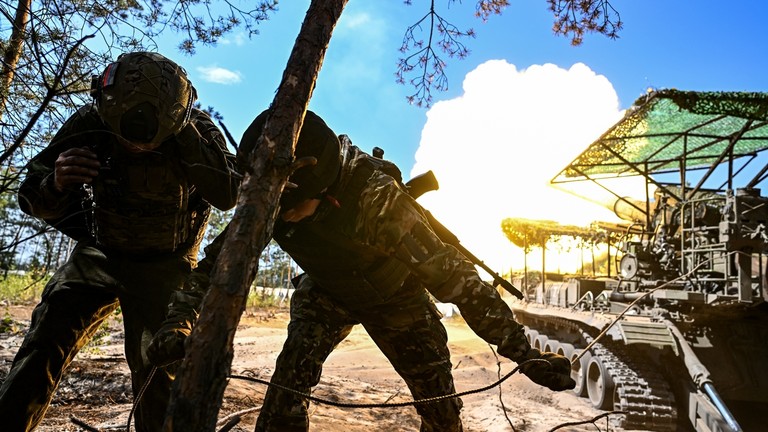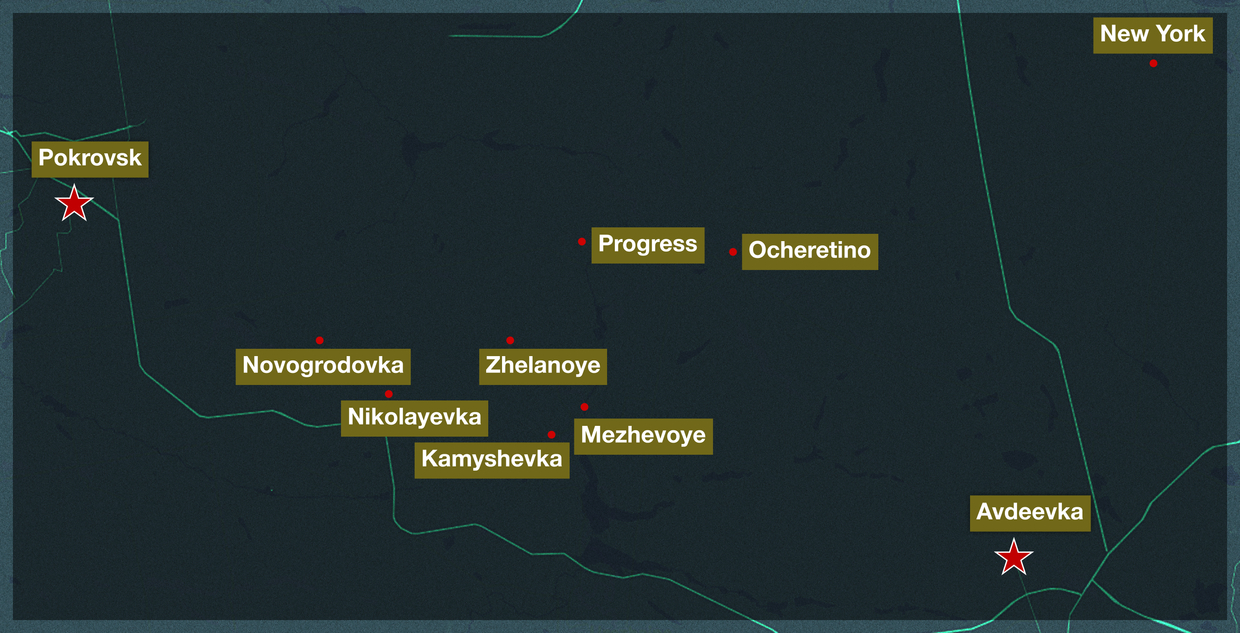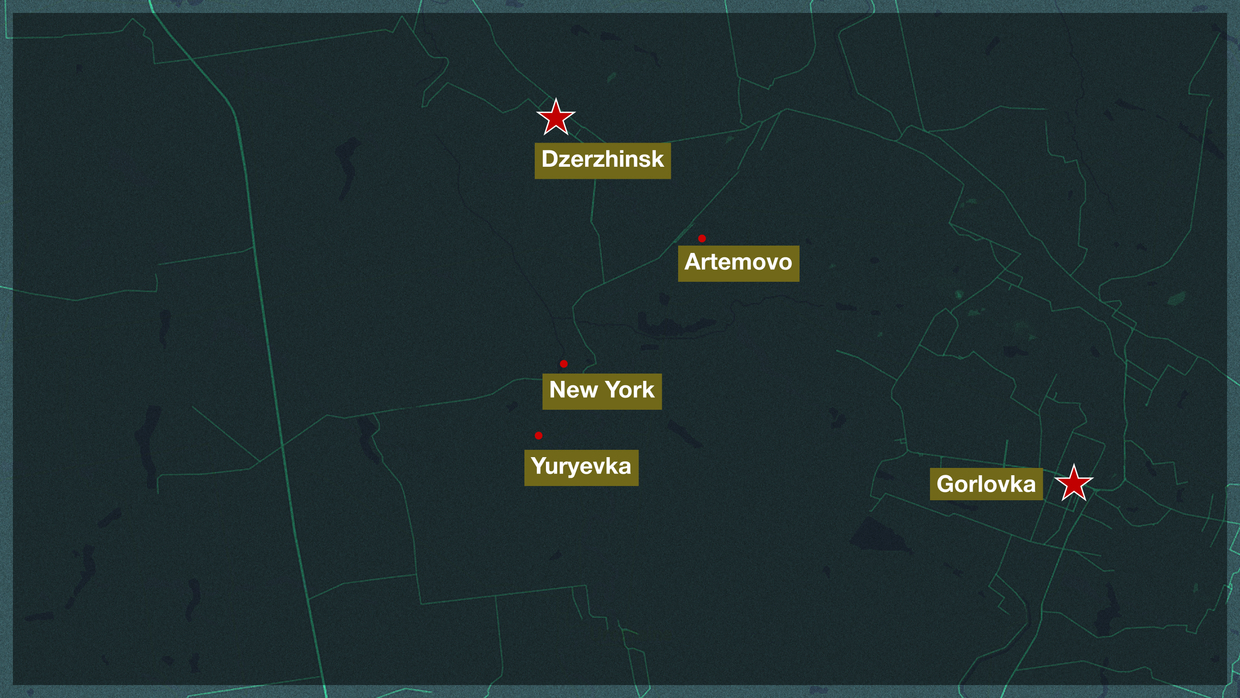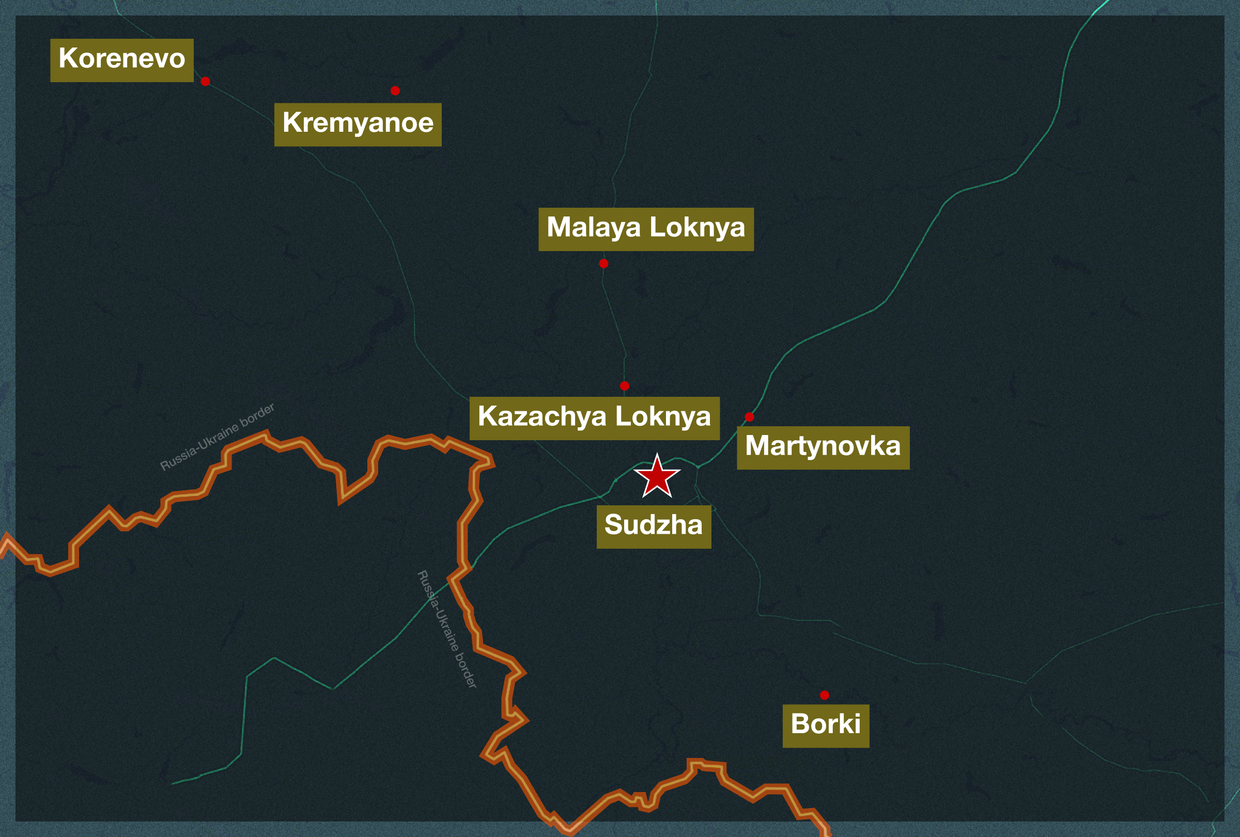The past week in the Ukraine conflict has seen intensive combat along the front line, with the most active hostilities continuing in the border areas of Russia’s Kursk Region, as well as in the Donetsk People’s Republic (DPR), where Moscow’s troops have liberated several communities.
Russian forces have also managed to make new gains in the Lugansk People’s Republic (LPR). The country’s Defense Ministry announced on Wednesday the liberation of Stelmakhovka, a large village located immediately to the east of the border between the LPR and Ukraine’s Kharkov region.
The heavily fortified village had been serving as the key Ukrainian stronghold in the area, with its fall potentially opening a way for Russian troops to approach the Oskol River, located some 15km to the west. Should Moscow’s forces be able to reach it, the Ukrainian forces will end up cut in half in the area, with the potential development likely forcing them to retreat beyond the Oskol, which flows north to south across Kharkov Region.
Donbass push continues
The Russian military has made new gains in the DPR, continuing their advance to the northwest of the town of Ocheretino, once a key logistics hub and a major stronghold for Ukrainian troops, where they had unsuccessfully tried to stop Moscow’s forces after the fall of Avdeevka early this year.
Over the week, Russian troops continued their westward push in the area while simultaneously expanding their zone of control to the north and south of their main axis of advance. The Russian Defense Ministry has announced the capture of the villages of Orlovka, Nikolayevka, Kamyshevka and Mezhevoye, located to the southwest of Ocheretino.
The development means that Russian forces have reached the immediate vicinity of the towns of Selidovo and Novgorodovka, as well as advanced towards the city of Pokrovsk (also known as Krasnoarmeysk), the last major settlement under Ukrainian control in the area. Uncorroborated footage circulating online suggests the country’s forces have already actually entered Novgorodovka, as well as seized a coal mine and a major spoil tip to the northeast of Selidovo.
The towering spoil tip has been one of the key points for the Ukrainian defenses in the area, given its dominant position over the town itself.
Active hostilities have also continued to the northwest of the city of Gorlovka, with Russian forces advancing on the satellite town of Toretsk (also known as Dzerzhinsk).
Following the liberation of the villages of New York (also known as Novgorodskoye) and Zalizne (Artemovo) last week, Russian troops forces have reportedly entered Toretsk itself, with active combat continuing inside the town.
The battle of Kursk
Hostilities have been ongoing in the border areas of Russia’s Kursk Region since Kiev launched a major incursion earlier this month. While the Ukrainian forces have continued their efforts to push deeper into Russian territory, Moscow has been seeking to push them back while striking rear targets and incoming reserves in Ukraine's adjacent Sumy Region.
The Ukrainian advance has been halted, with the situation effectively turning into an oncoming battle with no distinctive frontline, centered around multiple settlements, including the villages of Korenevo, Kremyanoye, Malaya Lonya, Martynovka, Borki and other locations.
Over the past week, Ukrainian forces have sustained heavy casualties in the area, with military convoys and smaller infantry groups repeatedly ending up ambushed, while staging areas have been subjected to heavy missile, artillery and aerial strikes.
A new drone video from Kursk Region circulating online, for instance, shows several pieces of Ukrainian armor, including a US-made Stryker armored personnel carrier (APC) overturned, apparently by a powerful explosion nearby. The vehicles bear the distinctive white triangle markings used by the invasion force.
The Russian military has actively been using FPV kamikaze drones to fend off the attack. For instance, a video shared by Apty Alaudinov, the commander of the Akhmat Special Forces from Russia’s Chechen Republic, shows a Ukrainian convoy ambushed by FPV drones operators with the unit.
Footage shows an Australian-supplied Bushmaster Protected Mobility Vehicle sustaining a hit, with a Stryker APC seen on fire in the background. The extremely low altitude of the drone and the exceptional quality of the footage suggests that the FPV was being operated using a fiber-optic cable, rather than by radio.
Another video shared by the Russian Defense Ministry shows a Ukrainian T-72M1 tank, likely received by Kiev from Eastern Europe, sustaining an FPV drone hit in the rear of its turret. The tank was spotted by a surveillance drone rolling out of a wooded area between two fields, firing at unseen targets. The FPV hit caused an internal explosion of the tank’s ammo stock, which ripped its turret clear off, obliterating the vehicle.
According to Moscow’s latest estimates, Kiev’s forces have suffered massive casualties in the attack on Kursk Region, losing more than 7,400 servicemen in just over three weeks, as well as sustaining heavy material losses. Up to 74 tanks, 36 infantry fighting vehicles, 64 APCs, as well as some 486 other armored vehicles have been destroyed. Kiev has also lost some high-value assets, including two artillery and one aerial radar, five anti-aircraft launchers, 10 electronic warfare stations, four US-made HIMARS and one M270 MLRS multiple rocket launchers.
Strikes on Ukraine’s critical infrastructure
On Monday, the Russian military conducted a massive strike with ballistic and cruise missiles, as well as kamikaze drones on Ukraine’s critical dual-use infrastructure, namely energy generation facilities used to service Kiev’s military-industrial complex. It was one of the largest-scale attacks to have taken place during the conflict.
The Russian Defense Ministry said it has targeted multiple facilities across Ukraine, including electrical substations and gas pumping stations, as well as stockpiles of aircraft munitions, delivered to Kiev by its Western backers.
Footage circulating online purports to show the aftermath of a cruise missile strike on Kiev Hydroelectric Power Plant, located in the town of Vyshgorod to the north of the Ukrainian capital. The facility was apparently hit by several projectiles; a large plume of black smoke has been seen billowing from it.
Another video from the scene suggests the plant’s generator hall sustained at least one hit, while the dam itself was damaged as well; the road running across it was littered with debris.
A large fuel depot was among the targets, with several large tanks ending up destroyed in explosions and resulting fire, footage from the scene shows.
Hunt for HIMARS systems
The Russian military has continued its effort to find and destroy Ukrainian HIMARS-family multiple rocket launchers, supplied to Kiev by the US and some other Western nations, reporting the destruction of several pieces over the week.
Long-touted by Ukrainian propaganda as an ultimate high-precision tool for striking high-value Russian assets, HIMARS-family launchers have been repeatedly used by Kiev to launch indiscriminate attacks deep into the country’s territory. In recent months, however, the systems have seen more actual combat use, providing fire support for troops or striking logistics, presumably due to the exhaustion of Ukraine’s Soviet multiple rocket launcher systems, both from domestic stocks and deliveries from abroad.
On Wednesday, the Russian Defense Ministry reported the destruction of two HIMARS launchers in Ukraine’s Sumy Region. The launchers were apparently being used to support Kiev’s forces in Russia’s Kursk Region.
One system was hit by a ballistic missile fired by an Iskander-M launcher, when it was discovered traveling from its firing position to a hiding spot in a wooded area near the village of Stepanovka. The strike caused multiple secondary detonations at the site and a massive blaze, footage shared by the ministry shows.
Another system was caught at a resupply point in the border village of Kondratovka. The HIMARS was hit by an airstrike, with the ammo stockpile, a transporter-loader vehicle and an escort car destroyed in the blast as well, according to the Russian military.
A few days ago, a M270 MLRS, a heavier tracked cousin of HIMARS, was destroyed in Ukraine’s Nikolayev Region, footage circulating online suggests. The vehicle was discovered by a surveillance drone deep in Ukrainian territory, some 60km away from the front line, near the village of Berezingovatoye.
Drone footage shows the launcher, a transport vehicle and a soft road car poorly concealed in a wooded area. The location was hit by a ballistic missile, apparently fired by an Iskander-M system.
The powerful blast triggered the detonation of an ammunition stockpile, which turned out to be stashed in an agricultural hangar nearby. All the vehicles there ended up destroyed; the hangar was completely obliterated by the ammunition explosion.





No comments:
Post a Comment